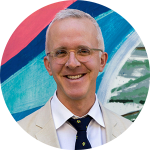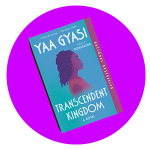Integrating Faith & Science
Hello Deep Readers,
Welcome to the fourth and final week of our in-depth exploration of Yaa Gyasi’s Transcendent Kingdom. We will welcome Gyasi to UCSC’s Quarry Amphitheater this Sunday, May 15. She’ll be in conversation with UCSC’s own Professor Emeritus of Literature, Karen Tei Yamashita. If you’re in the Santa Cruz area, this will be a great, free event. RSVP today to grab your seats.
This week, we’re going to take a deeper look at one of the main tensions of Transcendent Kingdom: religious faith vs. scientific inquiry. We alluded to the complexity of this tension in Week 1, and, in last week’s email, Prof. Cooppan discussed how the novel resists presenting the relationship between religion and science as a simple antagonism. With the help of Sean Keilen, Professor of Literature and Founding Co-Director of the Deep Read, we’re going to pick up on this point and explore the relationship between religion and science in the novel, suggesting potential takeaways the novel offers as we finish the book and contend with its ideas.

The Web of Religion and Science
As Prof. Cooppan mentioned, Transcendent Kingdom seems to set up religion and science as oppositional. Early in the novel, when introducing us to her research field, Gifty says that she “had traded the Pentecostalism of [her] childhood for this new religion, this new quest,” the neuroscience of addiction (21). That she refers to neuroscience as a “new religion,” though, is our first tip (or one of them) that Gifty has not replaced religion with science; her religious language always remains as she discusses her scientific research and describes her optogenetics lab of mice, levers, and endless Ensure. She refers to the brain in spiritual terms, at one point describing it as “infinite, unknowable, soulful, perhaps even magical” (21). She prays for her mice and for the success of her experiment (45), she baptizes them to recognize their sacrifice and servitude (95), and she calls her lab a “sanctuary, something divine,” as she weaves in a verse from Ecclesiastes to express her wonder at the light so central to her optogenetic research–“Light is sweet and it pleases the eye to see the sun” (261).

Of this dynamic, Prof. Keilen (left) says, “Gifty is a neuroscientist who, despite the fact that she stopped going to church when she moved away from home for college, continues to acknowledge the religion in which she was raised as part of the fabric of who she is, and therefore as a vantage point for understanding what she is trying to achieve in science.”But this religious, or spiritual, take on science is not something Gifty has ever or will ever “tell anyone”: “because I’m aware that the Christians in my life would find it blasphemous and the scientists would find it embarrassing, but the more I do this work the more I believe in a kind of holiness in our connection to everything on Earth. Holy is the mouse. Holy is the grain the mouse eats. Holy is the seed. Holy are we” (96).
As Gifty recognizes the idiosyncrasy of her view of religion and science, she locates the notion of their antagonism in the mutually exclusive groupings of “Christians” and “scientists” as well as in their chief institutions, the church and university. She describes how Pastor John thanks God for “leading” his congregation’s college students “safely back” from “the secular world,” and she recounts being “mocked” for her religion in college and taken as a “Jesus Freak” when speaking against secular orthodoxy in her science class at Harvard (45, 91-2, 269). Finding solace in Gerard Manley Hopkins’s poetry and the unnamed Harvard Divinity School Professor’s sermon, she attempts to weave threads of connection between fields that are set up as institutionally incompatible; she is after synthesis and the reconciliation of seeming opposites, not further division and retrenchment.
Gifty may not tell anyone in the narrative about her integrated practice of religion and science, but she does tell us. In this way, Gifty offers a third dimension of her character “hidden in plain sight for readers of the novel,” says Prof. Keilen. He explains:
Gifty is not only a woman raised in Pentecostal Christianity or a talented neuroscientist but also a storyteller. The novel we read is, in effect, the expression of the way that she integrates religion and science as parts of her own life experience. Religion and science may be at odds with each other as rival ways of understanding why life is what it is, but Gifty’s story holds them together, gives them both their due, and (for the most part) does not ask readers to choose between them. At the end of the novel, Gifty is a researcher at an elite private university and says she is no longer interested in transcendental questions, but she has become an Episcopalian of sorts and when she visits her parish church, she lights two candles: one for her brother and one for her mother.
Gifty’s compatible view of religion and science is evident not only in her turn to science but also in the reflections on her time in the Pentacostal church. If Gifty has a spiritual take on her scientific research, she also has a scientific approach to religion. In her journal excerpts exploring her budding religious faith, she expresses a desire to locate God’s specific place in the universe: “Dear God, I’ve been wondering where you are. I mean, I know you’re here with me, but where are you exactly? In space?” (13). As she asks for God’s geographic coordinates and specific location in the heavens, she also asks for proof of God’s existence: “Dear God, Would you show me that you’re real?” She is as much young believer as young scientist, seeking answers to spiritual questions that would ground religion in scientific certainty. While she never gets these concrete answers, she continues to insist on the reality of her previous religious faith and experience. She does not dismiss it. When Gifty reflects on being saved as a young girl, for example, she finds herself applying scientific inquiry to her experience: “What came over you? … Be specific” (155). She strains for a scientific explanation of her spiritual experience, but she remains resolute that her rebirth was both singular and certain: “I had never felt anything like it before, and I have never felt anything like it since. Sometimes I tell myself that I made it all up, the feeling of my heart full to bursting, the desire to know God and be known by him, but that is not true either. What I felt that night was real. It was as real as anything a person can feel” (155-6). As Prof. Keilen elaborates,
I believe it would be a mistake to read Transcendent Kingdom as a novel about a young woman who is born into religion and then simply leaves it behind as she turns to science as a rival source of explanation for life’s mysteries and sorrows. In the sentences here, she is acknowledging that her conversion as a girl changed her, and the enduring impact of that change can be felt every time she invokes passages from scripture to describe her girlhood. Those passages from the Bible aren’t part of her past. They belong to the present in which Gifty, as an adult woman who has survived the experiences the novel relates, is thinking about her life as a whole. In other words, they are still a part of her and her perspective on herself and the world, because they are written in her heart.

The Meaning of Mutuality
As we can see, the novel suggests that religion and science have a lot in common. At their essence, both religion and science are driven by the human desire for meaning and self-control: “What’s the point?” Where am I? Why am I here? “Do we have control over our thoughts?” (124, 75). While both have different ways of approaching these questions, neither religion nor science can offer definitive answers. Both are limited forms of knowledge, or limited explanations, based on a premise or question, whether the question is “can we live a sinless life?” or “why do some mice not stop pushing the lever?”. Religion can’t offer Gifty certainty in response to the former question, just as science can’t offer certainty for the latter. “How does an animal restrain itself from pursuing a reward, especially when there is risk involved?” (177). Gifty’s research question that she spends her entire graduate career “obsessing over” ends with her finding the neural circuits for reward-seeking behavior; she locates the specific place in the brain that could answer her question, yet what she finds is not how an animal can restrain itself when subjected to optogenetic therapy, in an exact sense, but just that restraint is possible: “All of this behavior manipulation, all of this tweaking and adjusting, injecting and imaging, to find out that restraint was possible, that it could, through arduous science, be done” (177). Science gets us close to the site of an answer, but, like religion, it doesn’t fully answer the question. It can answer where and perhaps how but not why.

Because of this, the choice between religion and science, for Gifty, is a “false” one. She understands both religion and science as “valuable ways of seeing,” while also noting that both “failed to fully satisfy their aim: to make clear, to make meaning” (213). Even as she says this, the novel’s deliberate braiding of religion and science offers us a third way; the answer is right in front of us–in these very interlacings of religion and science. While each may fail on their own (and perhaps even together), they can, at the very least, enrich each other in ways that can make our lives more meaningful and ethical. Bringing science to bear on religion can add ethical value to religion itself, as it does for Gifty when she recounts being taught the Biblical edict that “God gave us dominion over the animals, without ever being taught that I myself was an animal” (245). Similarly, bringing religion, or spirituality, to bear on science can add ethical value to science, as we see how viewing her lab as a sacrosanct place helps Gifty navigate the ethical difficulties of animal testing and bring meaning to her research. Even if religion and science don’t offer her clear directives or fixed ethical ends, Gifty is better off with both of them than with just one.
Go Deep

In what ways do you see Gifty leaning on both religion and science? Where do you find this happening? Do you see other places where a scientific approach gives value to Gifty’s life, aside from those mentioned above? What does scientific inquiry offer Gifty that perhaps religion does not? Similarly, do you see places where a religious, or spiritual approach, adds value? What kind of values does religion offer Gifty? What can religion offer that perhaps science cannot? Why do you think Transcendent Kingdom is so invested in intertwining rather than separating these categories of religion and science, domains that are conventionally thought to be mutually exclusive? Has the novel made you think differently about religion and science, or about the relationship between religion and science? What do you think the novel is trying to communicate by presenting them as integrated fields, rather than as incompatible ones?
Join the community conversation: We encourage you to think through these questions as you read and share your thoughts in the comments below
Community Conversation
Share your thoughts, reactions, and ideas with the Deep Read Community. Please note, comments are moderated and won’t populate immediately. Send any questions to deepread@ucsc.edu.

